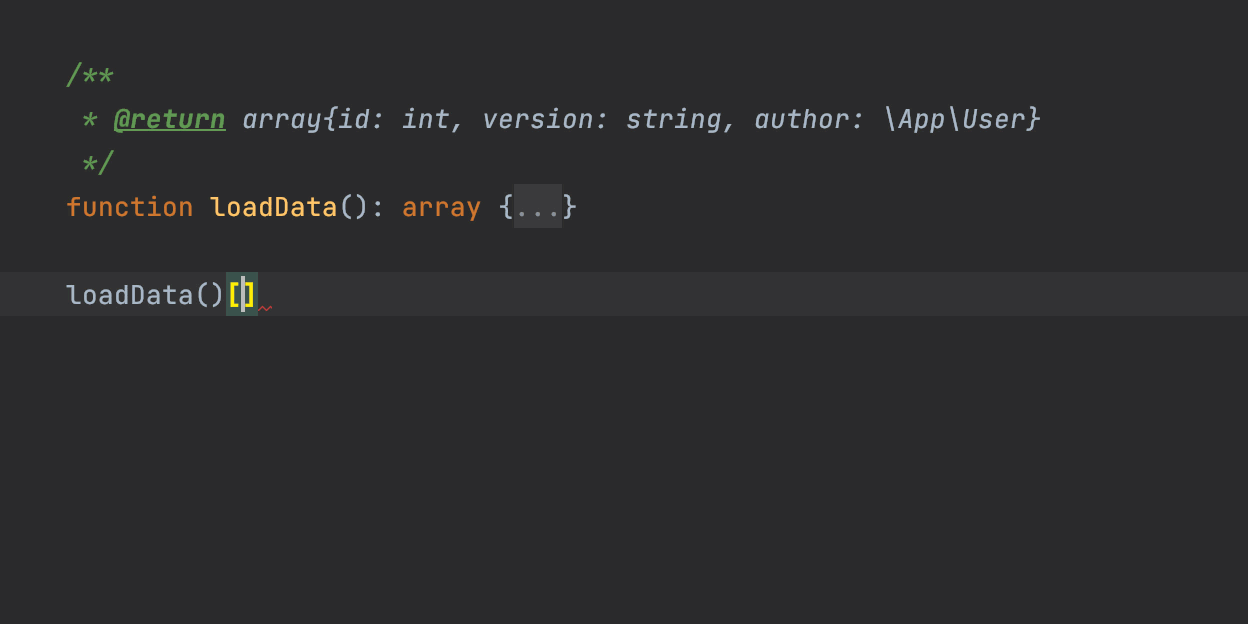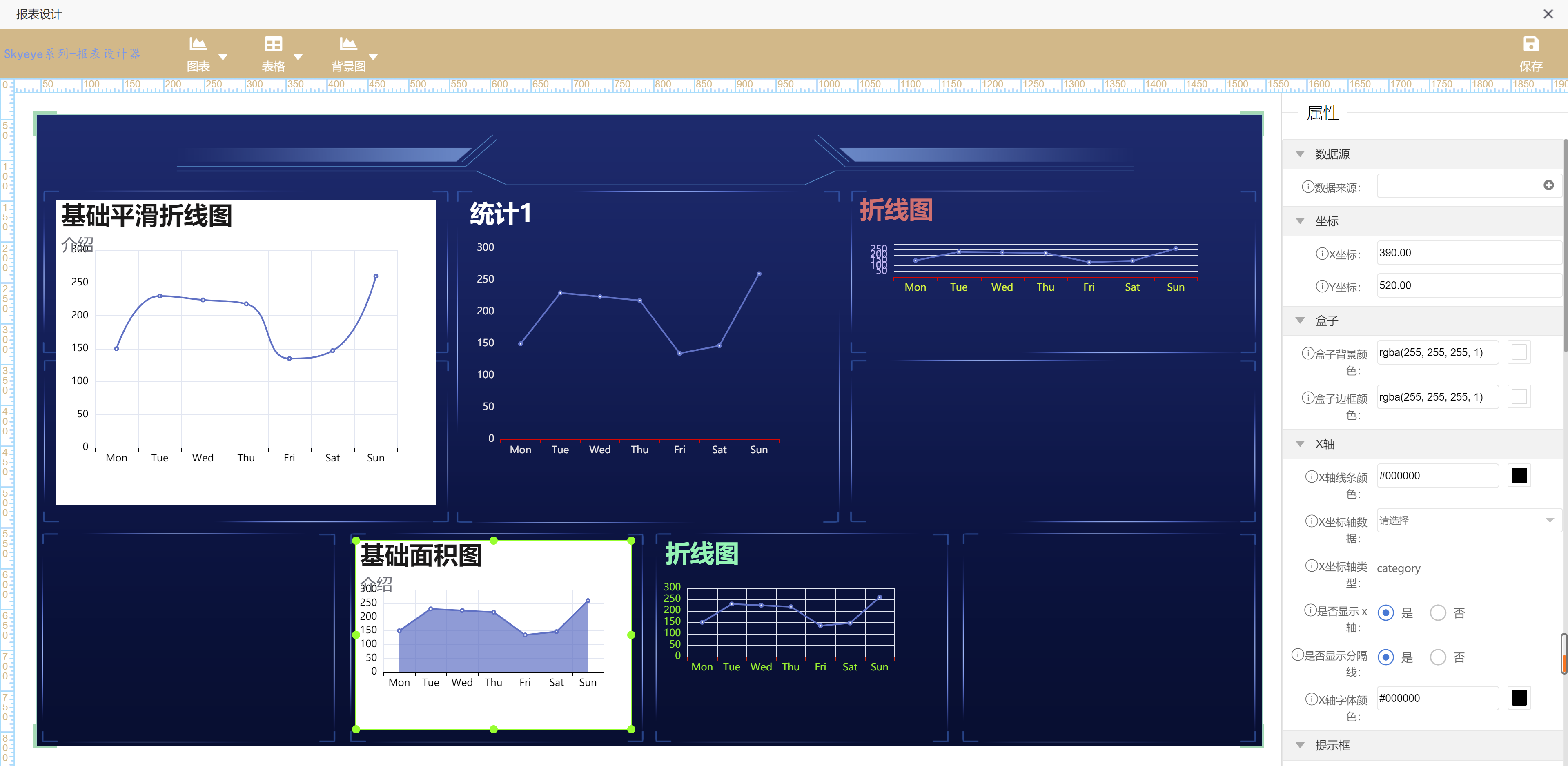CosId 1.2.8 发布,通用、灵活、高性能的分布式 ID 生成器
CosId 通用、灵活、高性能的分布式 ID 生成器
更新内容(1.2.8) 🎉 🎉 🎉
- 增强:
IdSegment支持 TimeToLive (存活时间)。
介绍
CosId 旨在提供通用、灵活、高性能的分布式 ID 生成器。 目前提供了俩类 ID 生成器:
SnowflakeId: 单机 TPS 性能:409W/s JMH 基准测试 , 主要解决 时钟回拨问题 、机器号分配问题 并且提供更加友好、灵活的使用体验。SegmentId: 每次获取一段 (Step) ID,来降低号段分发器的网络IO请求频次提升性能。IdSegmentDistributor: 号段分发器(号段存储器)RedisIdSegmentDistributor: 基于 Redis 的号段分发器。JdbcIdSegmentDistributor: 基于 Jdbc 的号段分发器,支持各种关系型数据库。
SegmentChainId(推荐):SegmentChainId(lock-free) 是对SegmentId的增强。性能可达到近似AtomicLong的 TPS 性能:12,743W+/s JMH 基准测试 。PrefetchWorker维护安全距离(safeDistance), 并且支持基于饥饿状态的动态safeDistance扩容/收缩。
SnowflakeId
SnowflakeId 使用
Long(64 bits) 位分区来生成 ID 的一种分布式 ID 算法。 通用的位分配方案为:timestamp(41 bits) +machineId(10 bits) +sequence(12 bits) = 63 bits 。
- 41 位
timestamp= (1L<<41)/(1000/3600/365) 约可以存储 69 年的时间戳,即可以使用的绝对时间为EPOCH+ 69 年,一般我们需要自定义EPOCH为产品开发时间,另外还可以通过压缩其他区域的分配位数,来增加时间戳位数来延长可用时间。 - 10 位
machineId= (1L<<10) = 1024 即相同业务可以部署 1024 个副本 (在 Kubernetes 概念里没有主从副本之分,这里直接沿用 Kubernetes 的定义) 实例,一般情况下没有必要使用这么多位,所以会根据部署规模需要重新定义。 - 12 位
sequence= (1L<<12) * 1000 = 4096000 即单机每秒可生成约 409W 的 ID,全局同业务集群可产生 4096000*1024=419430W=41.9亿(TPS)。
从 SnowflakeId 设计上可以看出:
timestamp在高位,所以 SnowflakeId 是本机单调递增的,受全局时钟同步影响 SnowflakeId 是全局趋势递增的。SnowflakeId 不对任何第三方中间件有强依赖关系,并且性能也非常高。
位分配方案可以按照业务系统需要灵活配置,来达到最优使用效果。
强依赖本机时钟,潜在的时钟回拨问题会导致 ID 重复。
machineId需要手动设置,实际部署时如果采用手动分配machineId,会非常低效。
CosId-SnowflakeId 主要解决 SnowflakeId 俩大问题:机器号分配问题、时钟回拨问题。 并且提供更加友好、灵活的使用体验。
MachineIdDistributor (MachineId 分配器)
目前 CosId 提供了以下三种
MachineId分配器。
ManualMachineIdDistributor
cosid: snowflake: machine: distributor: type: manual manual: machine-id: 0
手动分配
MachineId。
StatefulSetMachineIdDistributor
cosid: snowflake: machine: distributor: type: stateful_set
使用
Kubernetes的StatefulSet提供的稳定的标识 ID 作为机器号。
RedisMachineIdDistributor
cosid: snowflake: machine: distributor: type: redis
使用
Redis作为机器号的分发存储。
ClockBackwardsSynchronizer (时钟回拨同步器)
cosid: snowflake: clock-backwards: spin-threshold: 10 broken-threshold: 2000
默认提供的 DefaultClockBackwardsSynchronizer 时钟回拨同步器使用主动等待同步策略,spinThreshold(默认值 10 毫秒) 用于设置自旋等待阈值, 当大于spinThreshold 时使用线程休眠等待时钟同步,如果超过brokenThreshold(默认值 2 秒)时会直接抛出ClockTooManyBackwardsException异常。
MachineStateStorage (机器状态存储)
public class MachineState {
public static final MachineState NOT_FOUND = of(-1, -1);
private final int machineId;
private final long lastTimeStamp;
public MachineState(int machineId, long lastTimeStamp) {
this.machineId = machineId;
this.lastTimeStamp = lastTimeStamp;
}
public int getMachineId() {
return machineId;
}
public long getLastTimeStamp() {
return lastTimeStamp;
}
public static MachineState of(int machineId, long lastStamp) {
return new MachineState(machineId, lastStamp);
}
}
cosid: snowflake: machine: state-storage: local: state-location: ./cosid-machine-state/
默认提供的 LocalMachineStateStorage 本地机器状态存储,使用本地文件存储机器号、最近一次时间戳,用作 MachineState 缓存。
ClockSyncSnowflakeId (主动时钟同步 SnowflakeId)
cosid: snowflake: share: clock-sync: true
默认 SnowflakeId 当发生时钟回拨时会直接抛出 ClockBackwardsException 异常,而使用 ClockSyncSnowflakeId 会使用 ClockBackwardsSynchronizer 主动等待时钟同步来重新生成 ID,提供更加友好的使用体验。
SafeJavaScriptSnowflakeId (JavaScript 安全的 SnowflakeId)
SnowflakeId snowflakeId=SafeJavaScriptSnowflakeId.ofMillisecond(1);
JavaScript 的 Number.MAX_SAFE_INTEGER 只有 53 位,如果直接将 63 位的 SnowflakeId 返回给前端,那么会值溢出的情况,通常我们可以将SnowflakeId 转换为 String 类型或者自定义 SnowflakeId 位分配来缩短 SnowflakeId 的位数 使 ID 提供给前端时不溢出。
SnowflakeFriendlyId (可以将 SnowflakeId 解析成可读性更好的 SnowflakeIdState )
cosid: snowflake: share: friendly: true
public class SnowflakeIdState {
private final long id;
private final int machineId;
private final long sequence;
private final LocalDateTime timestamp;
/**
* {@link #timestamp}-{@link #machineId}-{@link #sequence}
*/
private final String friendlyId;
}
public interface SnowflakeFriendlyId extends SnowflakeId {
SnowflakeIdState friendlyId(long id);
SnowflakeIdState ofFriendlyId(String friendlyId);
default SnowflakeIdState friendlyId() {
long id = generate();
return friendlyId(id);
}
}
SnowflakeFriendlyId snowflakeFriendlyId=new DefaultSnowflakeFriendlyId(snowflakeId);
SnowflakeIdState idState=snowflakeFriendlyId.friendlyId();
idState.getFriendlyId(); //20210623131730192-1-0
SegmentId (号段模式)
RedisIdSegmentDistributor (使用Redis作为号段分发后端存储)
cosid: segment: enabled: true distributor: type: redis
JdbcIdSegmentDistributor (使用关系型数据库Db作为号段分发后端存储)
初始化
cosidtable
create table if not exists cosid
(
name varchar(100) not null comment '{namespace}.{name}',
last_max_id bigint not null default 0,
last_fetch_time bigint not null,
constraint cosid_pk
primary key (name)
) engine = InnoDB;
spring: datasource: url: jdbc:mysql://localhost:3306/test_db username: root password: root cosid: segment: enabled: true distributor: type: jdbc jdbc: enable-auto-init-cosid-table: false enable-auto-init-id-segment: true
开启 enable-auto-init-id-segment:true 之后,应用启动时会尝试创建 idSegment 记录,避免手动创建。类似执行了以下初始化sql脚本,不用担心误操作,因为 name 是主键。
insert into cosid
(name, last_max_id, last_fetch_time)
value
('namespace.name', 0, unix_timestamp());
SegmentChainId (号段链模式)
cosid: segment: enabled: true mode: chain chain: safe-distance: 5 prefetch-period: 1s
IdGeneratorProvider
cosid: snowflake: provider: bizA: # epoch: # timestamp-bit: sequence-bit: 12 bizB: # epoch: # timestamp-bit: sequence-bit: 12
IdGenerator idGenerator=idGeneratorProvider.get("bizA");
在实际使用中我们一般不会所有业务服务使用同一个 IdGenerator ,而是不同的业务使用不同的 IdGenerator,那么 IdGeneratorProvider就是为了解决这个问题而存在的,他是 IdGenerator 的容器,可以通过业务名来获取相应的 IdGenerator。
Examples
安装
Gradle
Kotlin DSL
val cosidVersion = "1.2.8";
implementation("me.ahoo.cosid:spring-boot-starter-cosid:${cosidVersion}")
Maven
<?xml version="1.0" encoding="UTF-8"?> <project xmlns="http://maven.apache.org/POM/4.0.0" xmlns:xsi="http://www.w3.org/2001/XMLSchema-instance" xsi:schemaLocation="http://maven.apache.org/POM/4.0.0 http://maven.apache.org/xsd/maven-4.0.0.xsd"> <modelVersion>4.0.0</modelVersion> <artifactId>demo</artifactId> <properties> <cosid.version>1.2.8</cosid.version> </properties> <dependencies> <dependency> <groupId>me.ahoo.cosid</groupId> <artifactId>spring-boot-starter-cosid</artifactId> <version>${cosid.version}</version> </dependency> </dependencies> </project>
application.yaml
cosid: namespace: ${spring.application.name} snowflake: enabled: true # epoch: 1577203200000 clock-backwards: spin-threshold: 10 broken-threshold: 2000 machine: # stable: true # machine-bit: 10 # instance-id: ${HOSTNAME} distributor: type: redis # manual: # machine-id: 0 state-storage: local: state-location: ./cosid-machine-state/ share: clock-sync: true friendly: true provider: bizA: # timestamp-bit: sequence-bit: 12 bizB: # timestamp-bit: sequence-bit: 12 segment: enabled: true mode: chain chain: safe-distance: 5 prefetch-period: 1s distributor: type: redis share: offset: 0 step: 100 provider: bizC: offset: 10000 step: 100 bizD: offset: 10000 step: 100
JMH-Benchmark
- 基准测试运行环境:笔记本开发机 ( MacBook Pro (M1) )
- 所有基准测试都在开发笔记本上执行。
- Redis 部署环境也在该笔记本开发机上。
SnowflakeId
gradle cosid-core:jmh # or java -jar cosid-core/build/libs/cosid-core-1.2.8-jmh.jar -bm thrpt -wi 1 -rf json -f 1
Benchmark Mode Cnt Score Error Units SnowflakeIdBenchmark.millisecondSnowflakeId_friendlyId thrpt 4020311.665 ops/s SnowflakeIdBenchmark.millisecondSnowflakeId_generate thrpt 4095403.859 ops/s SnowflakeIdBenchmark.safeJsMillisecondSnowflakeId_generate thrpt 511654.048 ops/s SnowflakeIdBenchmark.safeJsSecondSnowflakeId_generate thrpt 539818.563 ops/s SnowflakeIdBenchmark.secondSnowflakeId_generate thrpt 4206843.941 ops/s
RedisChainIdBenchmark
Throughput (ops/s)
gradle cosid-redis:jmh # or java -jar cosid-redis/build/libs/cosid-redis-1.2.8-jmh.jar -bm thrpt -wi 1 -rf json -f 1 RedisChainIdBenchmark
Benchmark Mode Cnt Score Error Units RedisChainIdBenchmark.atomicLong_baseline thrpt 5 144541334.198 ± 5578137.471 ops/s RedisChainIdBenchmark.step_1 thrpt 5 1874168.687 ± 310274.706 ops/s RedisChainIdBenchmark.step_100 thrpt 5 114226113.524 ± 15789563.078 ops/s RedisChainIdBenchmark.step_1000 thrpt 5 127439148.104 ± 1833743.699 ops/s
Percentile-Sample (P9999=0.208微秒)
百分位数 ,统计学术语,若将一组数据从小到大排序,并计算相应的累计百分点,则某百分点所对应数据的值,就称为这百分点的百分位数,以Pk表示第k百分位数。百分位数是用来比较个体在群体中的相对地位量数。
java -jar cosid-redis/build/libs/cosid-redis-1.2.8-jmh.jar -bm sample -wi 1 -rf json -f 1 -tu us step_1000
Benchmark Mode Cnt Score Error Units RedisChainIdBenchmark.step_1000 sample 1336271 0.024 ± 0.001 us/op RedisChainIdBenchmark.step_1000:step_1000·p0.00 sample ≈ 0 us/op RedisChainIdBenchmark.step_1000:step_1000·p0.50 sample 0.041 us/op RedisChainIdBenchmark.step_1000:step_1000·p0.90 sample 0.042 us/op RedisChainIdBenchmark.step_1000:step_1000·p0.95 sample 0.042 us/op RedisChainIdBenchmark.step_1000:step_1000·p0.99 sample 0.042 us/op RedisChainIdBenchmark.step_1000:step_1000·p0.999 sample 0.042 us/op RedisChainIdBenchmark.step_1000:step_1000·p0.9999 sample 0.208 us/op RedisChainIdBenchmark.step_1000:step_1000·p1.00 sample 37.440 us/op
MySqlChainIdBenchmark
Throughput (ops/s)
gradle cosid-jdbc:jmh # or java -jar cosid-jdbc/build/libs/cosid-jdbc-1.2.8-jmh.jar -bm thrpt -wi 1 -rf json -f 1 MySqlChainIdBenchmark
Benchmark Mode Cnt Score Error Units MySqlChainIdBenchmark.atomicLong_baseline thrpt 5 145294642.937 ± 224876.284 ops/s MySqlChainIdBenchmark.step_1 thrpt 5 35058.790 ± 36226.041 ops/s MySqlChainIdBenchmark.step_100 thrpt 5 74575876.804 ± 5590390.811 ops/s MySqlChainIdBenchmark.step_1000 thrpt 5 123131804.260 ± 1488004.409 ops/s
Percentile-Sample (P9999=0.208微秒)
java -jar cosid-jdbc/build/libs/cosid-jdbc-1.2.8-jmh.jar -bm sample -wi 1 -rf json -f 1 -tu us step_1000
Benchmark Mode Cnt Score Error Units MySqlChainIdBenchmark.step_1000 sample 1286774 0.024 ± 0.001 us/op MySqlChainIdBenchmark.step_1000:step_1000·p0.00 sample ≈ 0 us/op MySqlChainIdBenchmark.step_1000:step_1000·p0.50 sample 0.041 us/op MySqlChainIdBenchmark.step_1000:step_1000·p0.90 sample 0.042 us/op MySqlChainIdBenchmark.step_1000:step_1000·p0.95 sample 0.042 us/op MySqlChainIdBenchmark.step_1000:step_1000·p0.99 sample 0.042 us/op MySqlChainIdBenchmark.step_1000:step_1000·p0.999 sample 0.083 us/op MySqlChainIdBenchmark.step_1000:step_1000·p0.9999 sample 0.208 us/op MySqlChainIdBenchmark.step_1000:step_1000·p1.00 sample 342.528 us/op














